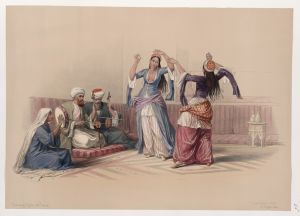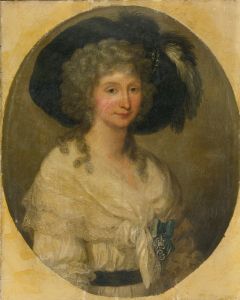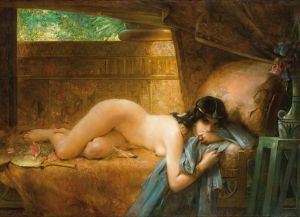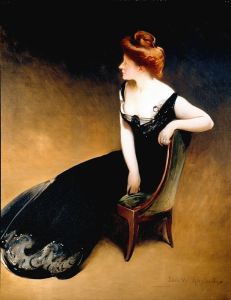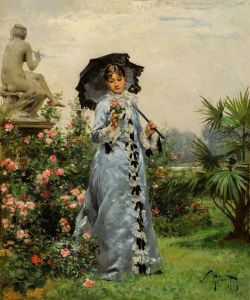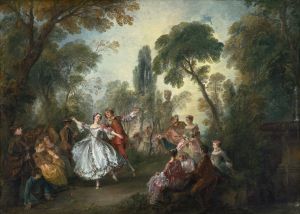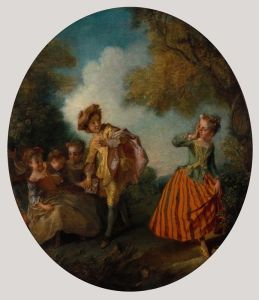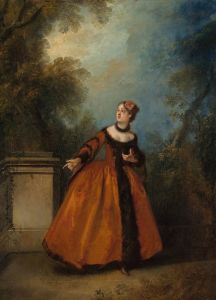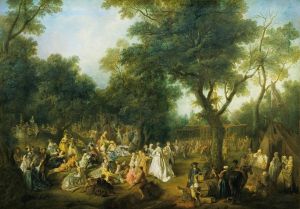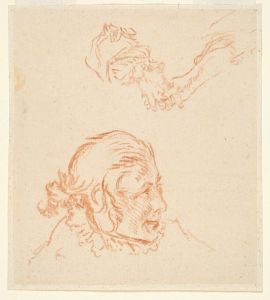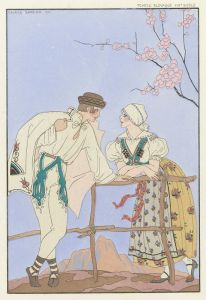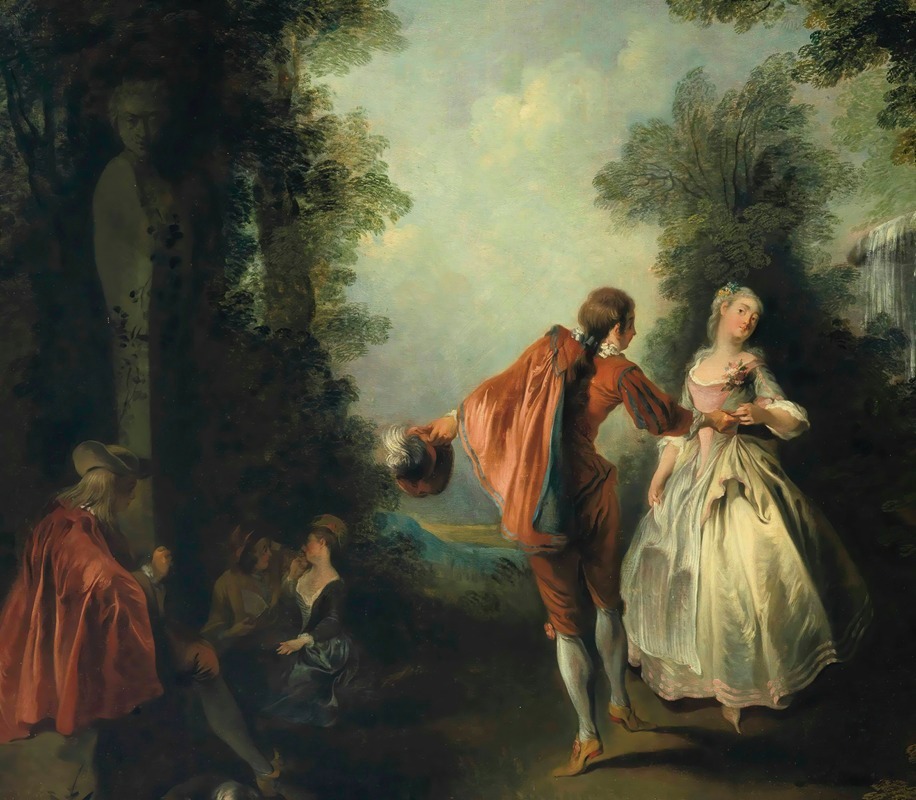
Elegant Figures Dancing In A Wooded Landscape
A hand-painted replica of Nicolas Lancret’s masterpiece Elegant Figures Dancing In A Wooded Landscape, meticulously crafted by professional artists to capture the true essence of the original. Each piece is created with museum-quality canvas and rare mineral pigments, carefully painted by experienced artists with delicate brushstrokes and rich, layered colors to perfectly recreate the texture of the original artwork. Unlike machine-printed reproductions, this hand-painted version brings the painting to life, infused with the artist’s emotions and skill in every stroke. Whether for personal collection or home decoration, it instantly elevates the artistic atmosphere of any space.
Nicolas Lancret (1690–1743) was a prominent French painter known for his depictions of light-hearted and elegant scenes, often featuring figures engaged in leisure activities. One of his notable works is "Elegant Figures Dancing In A Wooded Landscape," which exemplifies his style and thematic focus. Lancret was a contemporary of Antoine Watteau and was influenced by the Rococo movement, which emphasized ornate and decorative art, often with playful and pastoral themes.
"Elegant Figures Dancing In A Wooded Landscape" captures a scene typical of Lancret's oeuvre, where he skillfully combines elements of nature with human activity. The painting depicts a group of finely dressed individuals engaged in dance within a lush, wooded setting. This choice of subject reflects the 18th-century French aristocracy's fascination with pastoral themes and leisure pursuits, a common motif in Rococo art.
The composition of the painting is carefully arranged to draw the viewer's eye across the scene, highlighting the interaction between the figures and their environment. Lancret's use of color is notable for its soft, pastel tones, which contribute to the overall sense of elegance and refinement. The figures are depicted with a sense of grace and fluidity, characteristic of Lancret's ability to capture movement and emotion.
Lancret's attention to detail is evident in the intricate costumes of the dancers, which reflect the fashion of the time. The clothing is rendered with precision, showcasing the textures and patterns that were popular among the French elite. This attention to sartorial detail not only adds to the visual appeal of the painting but also provides insight into the cultural context of the period.
The wooded landscape serves as more than just a backdrop; it is an integral part of the composition that enhances the idyllic and serene atmosphere of the scene. Lancret's depiction of nature is both romanticized and idealized, in keeping with the Rococo tradition of creating harmonious and pleasing images. The interplay of light and shadow in the foliage adds depth to the painting, creating a sense of three-dimensionality.
Lancret's work, including "Elegant Figures Dancing In A Wooded Landscape," was well-received during his lifetime, and he enjoyed considerable success. He was admitted to the prestigious Académie Royale de Peinture et de Sculpture in 1719, which was a testament to his skill and reputation as an artist. His paintings were sought after by collectors and patrons, and he contributed significantly to the development of genre painting in France.
Today, Lancret's paintings are appreciated for their charm and technical proficiency. They offer a glimpse into the leisurely pursuits of the 18th-century French aristocracy and continue to be studied for their artistic and historical significance. "Elegant Figures Dancing In A Wooded Landscape" remains a fine example of Lancret's ability to blend narrative and aesthetic elements, creating works that are both engaging and visually delightful.





